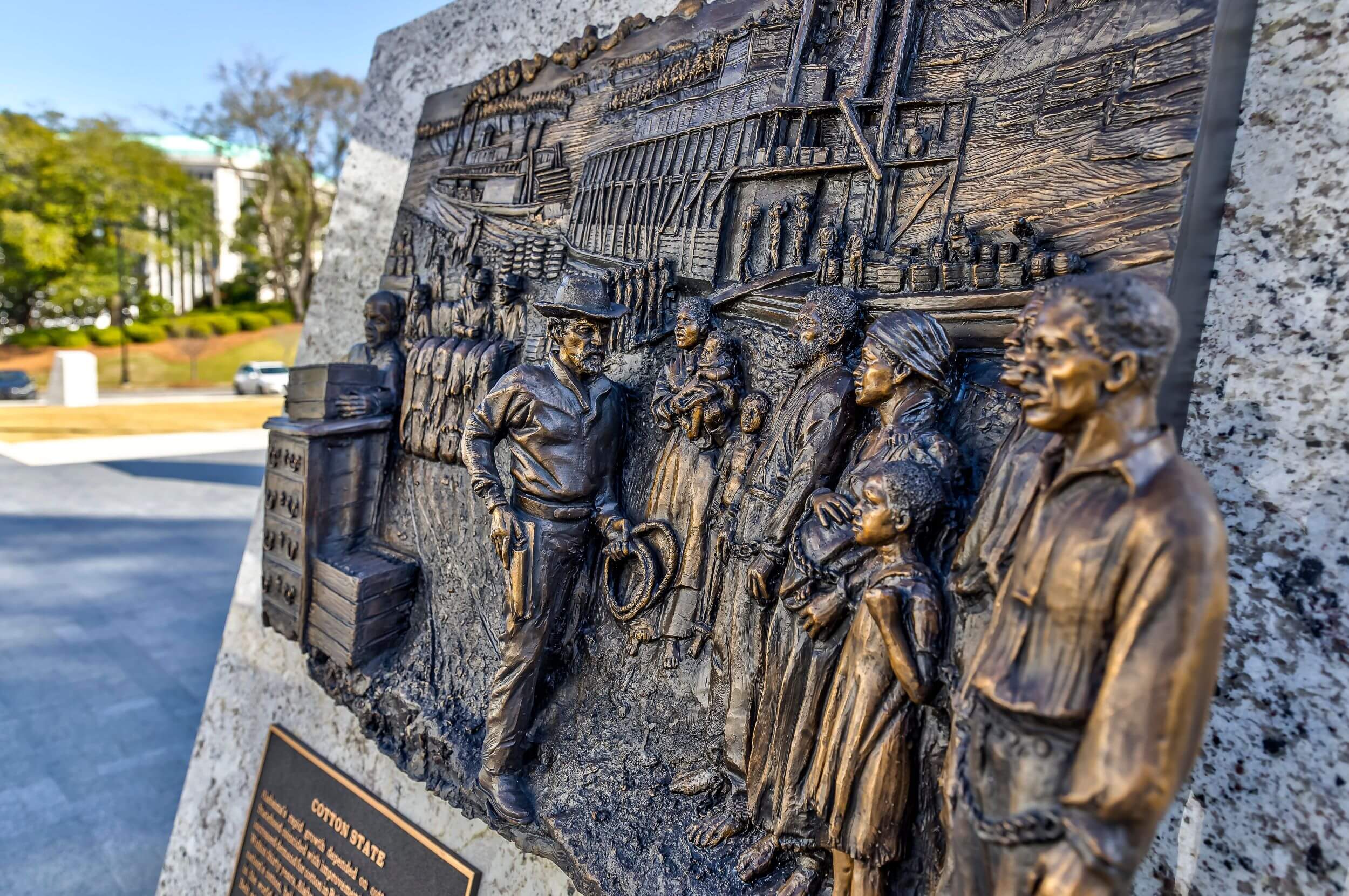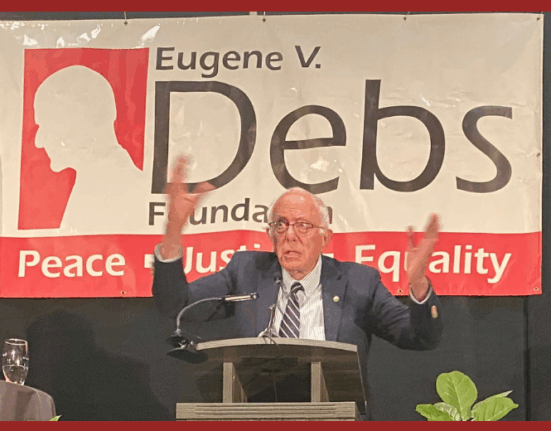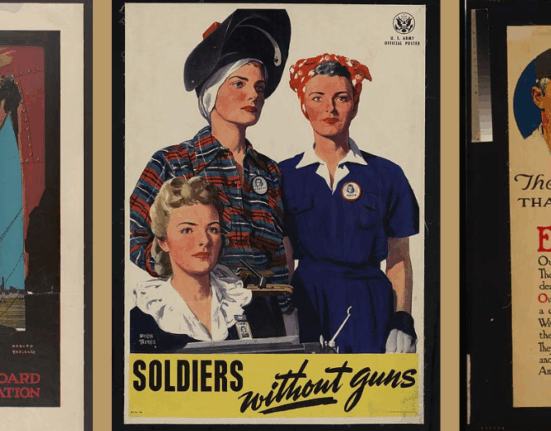Few memorial landscapes have changed as much over the past decade than Montgomery, Alabama, the “Cradle of the Confederacy.” At one time, the city’s best known historic site and museum was the first White House of the Confederacy, where Jefferson Davis resided between February and May 1861. Today, that building, just adjacent to the Alabama State Capitol, is dwarfed in importance by a new memorial landscape in the city, anchored by the Equal Justice Initiative’s (EJI) Legacy Museum and National Memorial for Peace and Justice. These two sites—pilgrimages, really, for Americans committed to racial justice and an honest reckoning with the history of white supremacy—now stand at the center of an urban memorial complex honoring the history of the civil rights movement. In addition to the EJI sites, visitors to Montgomery encounter museums, monuments, and historic sites devoted to Rosa Parks, the Freedom Riders, and even the enslaved Black women who suffered as subjects of medical experiments at the hands of the notorious “father of gynecology”, Dr. J. Marian Sims (whose statue still stands on the Alabama state Capitol grounds).
On a recent visit to Montgomery, however, I stumbled upon two interesting historical sites that commemorate the city’s labor history, one belonging to the memories of the “old” Montgomery, and another more in tune with the dramatic changes wrought by the EJI. The still graceful city is constructed up against the east bank of the Alabama River, and broad boulevards flow up a gentle slope to the State Capitol a mile away.

As EJI has taken great pains to point out, the main thoroughfare running down to the river—Commerce Street—once was lined with slave warehouses, the offices of slave traders, bankers and insurance agents entangled with the slave trade. Enslaved people newly arrived on the riverfront through the nation’s thriving internal slave trade would be marched in coffles up Commerce Street, to be exhibited in the city’s central auction block, about halfway between the riverfront docks and the Capitol. Historic markers along this line of march remind the visitor that the enslaved, as both laborers and commodities, were absolutely central to the city’s antebellum economy.
Yet I was astounded to discover that down by the river itself, older markers still held court. Especially striking is one that describes “A City Built on Commerce.” It is worth quoting at length:
Due to its geographic location, [antebellum] Montgomery quickly became a center of commerce and government in the fast-growing central Alabama region. It was at this time that the first of many riverboats, the Harriott, arrived and transformed Montgomery into an important regional hub for the shipping, trading, and storing of cotton and many other important commodities.
Other important commodities! As it happens, a crude graffiti scratched over the word “commodities” replaces that euphemism with “slaves.” Without such corrective vandalism, visitors to the riverfront would be forgiven for not knowing that slavery even existed in antebellum Montgomery, let alone that it was the engine of the city’s (and state’s) entire economy. And before EJI remade Montgomery’s memorial landscape, that is all they would have learned.

Equally astonishing, however, was my encounter with Bicentennial Park, a broad semicircle of 16 bronze relief sculptures surrounding the front of the state Capitol and narrating Alabama’s history, from its pre-settlement days to the space age. The largest monument on the grounds of the Capitol itself is still an enormous memorial to those who fought on behalf of the Confederacy. Yet Bicentennial Park tells a very different story, one straightforward and honest enough to constitute a suitable antidote to the shameful concealment still found at the riverfront.
The historical narrative here not only incorporates the labor of the enslaved into the state’s history, but makes labor history—and Black labor—central to several markers.

Alabama Department of Archives and History
For example, panel 4, “The Path to Statehood,” notes that after violently displacing indigenous peoples, “Many planters brought enslaved workers with them.” While the panel on the state’s antebellum economy gives pride of place to cotton, there is no shying away from the fact that “Slavery was central to Alabama’s development and had lasting effects on its economy, culture, and politics.” Indeed, the panel unequivocally states that “the labor of enslaved blacks was responsible for much of the state’s early infrastructure, the construction of public and private buildings, and the cotton cultivation that sustained the economy” and reminds visitors that by the start of the Civil War, “Most whites believed the preservation of slavery to be essential to the state’s future.” Central to this bronze bas-relief is an enslaved family, some of them in chains—it looks like they have just disembarked from a riverboat—confronted by an armed white man with his hand on his pistol and carrying a whip in his other hand. There is no mistaking that the cotton economy depended on the internal slave trade and slavery, and that it rested on naked force.

- “Cotton State” Credit: Alabama Department of Archives and History.
Impressively, and much to my surprise, labor history and its entanglement with questions of race features as well on several panels devoted to Alabama’s postbellum history. The panel on the Civil War alludes to Black labor and Black enlistment in the Union Army; an entire panel is devoted to emancipation and Reconstruction, giving pride of place to Black efforts to make freedom a reality in the face of recalcitrant white Alabamians. Most striking to me was the panel on later nineteenth-century industrialization, not only because of its recognition that “Many workers joined national labor unions, which clashed with management over pay and working conditions,” but because of the rare acknowledgment that “industry also made use of low-cost labor available through the convict-lease system. The convicted, mostly black men and often arrested for misdemeanors, generated revenue for state and county governments by working in bondage as miners and in other dangerous jobs.” Here the bas-relief depicts African American workers in the pig-iron shed of the Sloss Furnaces, an enterprise entirely dependent on convict-mined coal to stoke its furnaces.

The following panel on Populism also offers a searingly honest account of the 1890s political revolt, noting that the biracial People’s Party in Alabama “called for increased school funding, the end of the convict-lease system, assistance to farmers, and the protection of African Americans’ political rights…. but the Populists were defeated through election fraud and intimidation.” The direct result of this challenge, the panel points out, was the 1901 state Constitution with “a literacy test, a poll tax, and other barriers that disfranchised most blacks and many poor whites.”
Even the panels focused on more recent times make working people’s lives part of the Alabama story, observing that “ the six years after passage of the 1994 North American Free Trade Agreement, Alabama lost seventeen thousand manufacturing jobs, with the largest cuts coming at apparel and textile plants” and “Automation has rapidly changed the way Alabamians work in the manufacturing sector. People monitor and repair robots that do the lifting, assembly, and welding formerly performed by humans.”
Admittedly, none of this surpasses anything one would find in a basic American history textbook today. Yet, as an enclosing ring around the majestic Capitol steps that saw both George Wallace’s “segregation forever” speech in 1963 and Martin Luther King, Jr’s. address at the conclusion of the 1965 Selma to Montgomery march, I count this as progress.





